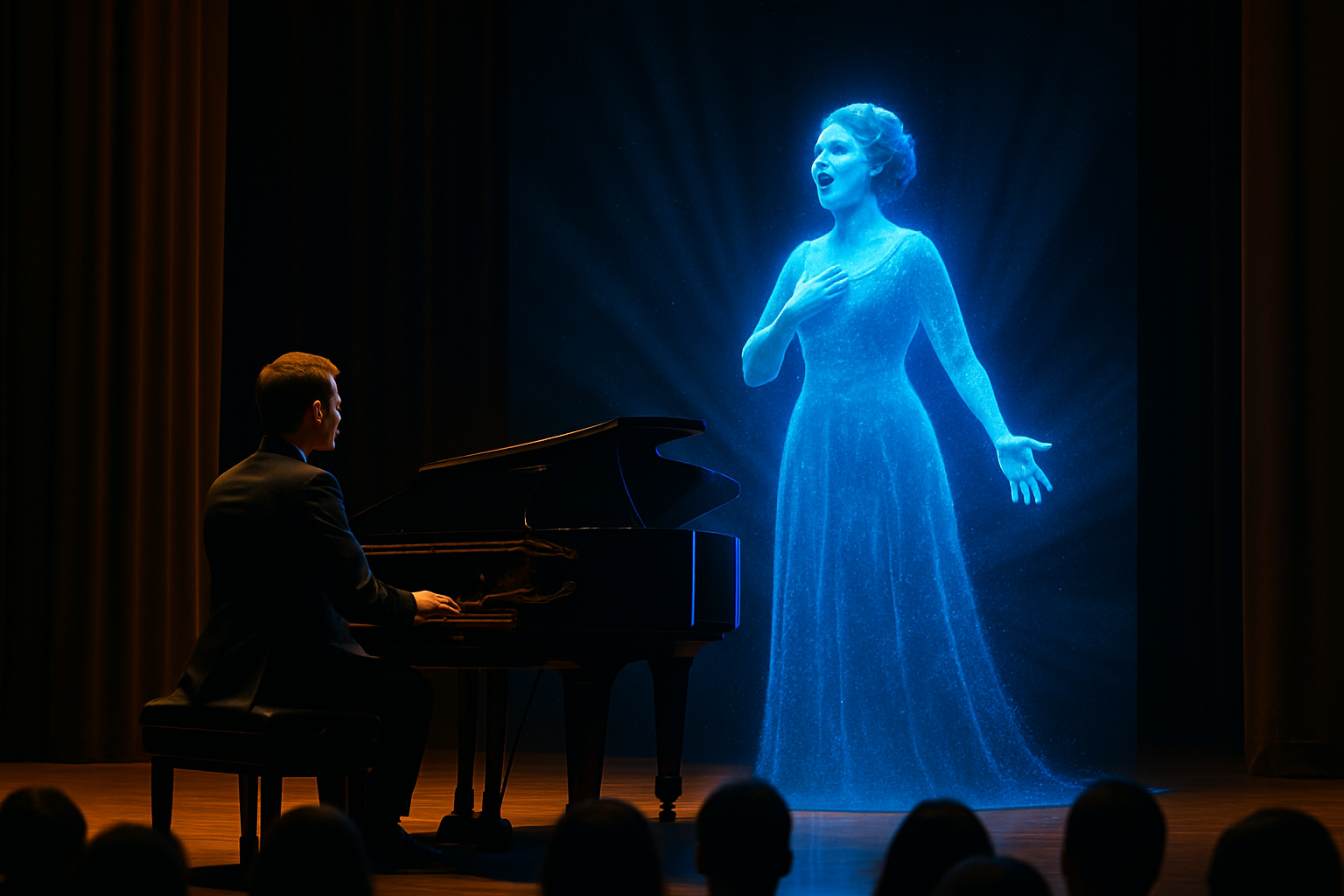Holographic Opera: A New Dimension in Performing Arts
In the ever-evolving landscape of performing arts, a groundbreaking fusion of technology and tradition is captivating audiences worldwide. Holographic opera, a cutting-edge approach to classical performance, is revolutionizing the way we experience this centuries-old art form. By blending state-of-the-art holographic projections with live singers and musicians, these productions are pushing the boundaries of what's possible on stage, creating immersive experiences that blur the lines between reality and illusion.

Technological Marvels Behind the Curtain
At the heart of holographic opera lies a complex system of high-resolution projectors, motion capture technology, and advanced computer graphics. Unlike simple projections, these holograms appear three-dimensional and can interact with live performers in real-time. The technology allows for the creation of fantastical sets, otherworldly creatures, and even the replication of legendary singers from the past. Specialized screens and carefully angled reflective surfaces ensure that the holograms seamlessly blend with the physical elements on stage.
Reimagining Classical Works
Holographic opera has breathed new life into classic repertoire. Productions of Wagner’s Ring Cycle have utilized holograms to create awe-inspiring depictions of mythical creatures and magical transformations. Mozart’s The Magic Flute has been reimagined with holographic projections bringing the enchanted forest and mystical trials to vivid life. These technological enhancements allow for previously unimaginable staging possibilities, enabling directors to realize their most ambitious visions without the constraints of physical set design.
Creating New Operatic Experiences
Beyond reimagining existing works, holographic technology has inspired the creation of entirely new operas. Composers and librettists are now writing pieces specifically designed to take advantage of these technological capabilities. These new works often explore themes of virtual reality, artificial intelligence, and the blurring of digital and physical realms. One notable example is The Singularity, a futuristic opera that tells the story of humanity’s merger with artificial intelligence, using holograms to represent the digital consciousness of its characters.
Challenges and Controversies
As with any radical innovation in a traditional art form, holographic opera has faced its share of challenges and criticisms. Purists argue that the technology detracts from the human element of opera, potentially overshadowing the vocal performances that are at the heart of the art form. There are also concerns about the high costs associated with implementing holographic systems, which could limit accessibility and lead to increased ticket prices. Technical glitches during live performances pose another challenge, as any disruption to the holographic elements can shatter the illusion and impact the audience’s experience.
The Future of Holographic Opera
Despite the challenges, the future of holographic opera looks promising. As the technology continues to advance, we can expect even more seamless integration between live performers and digital elements. Some visionaries in the field predict fully immersive experiences where audience members can interact with holographic environments, blurring the line between spectator and participant. There’s also potential for global collaborations, with holographic technology allowing performers from different parts of the world to appear on the same stage simultaneously.
Impact on the Opera Industry
The advent of holographic opera is having a ripple effect throughout the industry. Traditional opera houses are investing in upgrades to accommodate this new technology, while new venues specifically designed for holographic performances are emerging. The skill set required for opera production is evolving, with demand growing for professionals who can bridge the gap between classical music and cutting-edge technology. Additionally, holographic opera is attracting a new demographic of tech-savvy audience members, potentially securing the art form’s relevance for future generations.
In conclusion, holographic opera represents a bold step into the future for one of the world’s oldest performing arts. By embracing technology while honoring tradition, it offers a thrilling new dimension to operatic storytelling. As this innovative approach continues to evolve, it promises to captivate audiences, challenge artists, and redefine the boundaries of theatrical performance. The curtain has risen on a new era of opera, where the magic of music meets the marvels of modern technology, creating unforgettable experiences that resonate with audiences of all ages.





